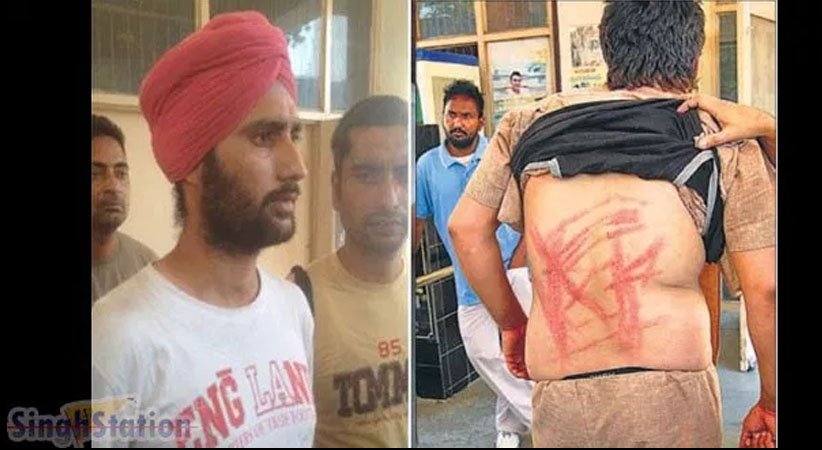NEWS & MEDIA
NEWS & MEDIA
New Delhi | 2016-03-09The Enduring Curse of Caste

NEW DELHI — Of the many protests to convulse public universities across India in recent weeks, the one held on Feb. 23, in which thousands of students, faculty and activists marched through central Delhi demanding “Justice for Rohith,” was the largest and perhaps the most palpably indignant.
A month before, Rohith Vemula, a 26-year-old Ph.D. student at the University of Hyderabad, in southern India, hanged himself from the ceiling fan in a friend’s hostel room. Mr. Vemula was raised by his single working mother, who is from a “scheduled caste,” the lowest rung of the hierarchical system that structures traditional Hindu society, and which used to be deemed “untouchable” until India’s independence in 1947. Mr. Vemula identified as Dalit, a word meaning “crushed” or “ground down” and refers to the oppression, often violent, suffered by scheduled castes over centuries of Indian history.
Mr. Vemula had secured admission to a prestigious graduate science program, as well as a highly competitive national research fellowship. He was a brilliant scholar and a popular and vociferous campus activist for the rights of disenfranchised communities. He killed himself because of relentless caste discrimination.
He left behind a searing suicide note: “The value of a man was reduced to his immediate identity and nearest possibility. To a vote. To a number. To a thing. Never was a man treated as a mind.”
Mr. Vemula’s suicide — hardly a rarity among Dalits at India’s best universities — is emblematic of the problems of the country’s affirmative action program. Within a few years after independence, India had set aside for Dalits and other disadvantaged castes about 23 percent of government jobs and seats in public universities. Today, the reservations apply to many more groups and cover about 50 percent of such posts and seats. But numerical improvement does not an equal society make.
Dalit students still come from severe poverty. They lead de facto segregated lives on nominally diverse and inclusive campuses. They still face daunting disadvantages in the job market even after they graduate with degrees. The ability of “reserved” candidates is always suspect, regardless of their performance.
The gap between the high and the low castes, between so-called backward and forward communities, not only persists, it also manifests itself through ever-more subtle and complex forms of discrimination and violence. Being the beneficiary of reservations can itself be a stigma.
B.R. Ambedkar, a Dalit and an architect of India’s 1950 Constitution, warned the Constituent Assembly in 1949 that the political revolution inspired by Mohandas K. Gandhi, which had led to India’s freedom from British rule, must be accompanied by a social revolution upholding the ideals of fraternity and dignity for all.
Together with other progressive founders of the Indian Republic, Ambedkar helped make social, economic and political justice the first item of business in the statute books. The Constitution they drafted made it a punishable offense to treat anyone as “untouchable,” outlawed discrimination based on caste, and encouraged the state to pass measures correcting its effects. With that, the bare bones of affirmative action — the “reservations,” or quota, system — were in place.
Ambedkar believed that within a decade or two quotas would bring about “the annihilation of caste” and become unnecessary. But this was not to be. In the late 1970s the government set up the Mandal Commission to study which other groups, even if not among the lowest castes, might also be suffering from social, economic or educational deprivation. By the early 1990s, India had begun to expand reservations to include the so-called Other Backward Classes.
But today it is clear that even the Mandal reforms have failed to bring about Ambedkar’s dream of a genuinely equal society. Caste, instead of withering away as Indian democracy matures, has asserted itself in new ways.
Mr. Vemula viscerally understood this unhappy truth. Since August 2015, he had faced the hostility of university authorities for being politically engaged and unusually articulate. In just one semester, he had lost his hostel accommodation, his monthly stipend and access to the classroom.
For several nights leading up to his suicide, during the coldest stretch of the winter, he had camped on mattresses and blankets set outside the hostel’s gates. A few other students were with him, and they wryly referred to their makeshift arrangement as a “Dalit ghetto.”
Mr. Vemula’s fault was not simply being a Dalit. He was also a leader in the Ambedkar Students Association, which actively campaigned to “educate, agitate and organize” students, following a rousing slogan from Ambedkar. The group’s members discussed not only Dalit issues, but also other controversial matters: the death penalty; Kashmir’s problematic relationship with the Indian union; communal violence against minorities, especially Muslims, in what is an officially secular nation.
Worse perhaps, Mr. Vemula had gained admission to the University of Hyderabad in the general, nonreserved category — meaning that his trajectory had not followed the standard script of marginality and exclusion. Politically aware and assertive youth like him face the brunt of double discrimination: Not only are they Dalit, but they refuse the victimhood expected of them.
Contrast that with groups that traditionally have been better off but increasingly are calling themselves victims in order to claim special protection. Castes like Jats in Haryana, Patidars in Gujarat, Marathas in Maharashtra and Kapus in Andhra Pradesh have been agitating recently, asking to benefit from reservations, even though they often are wealthy or own land.
India started opening up its economy at the same time that the Mandal recommendations were being debated. By the mid-2000s, overall prosperity increased, lifting many poor people into the middle class. But liberalization, along with urbanization, also created unforeseen types of inequality.
The so-called dominant castes agitating for reservations fall between two stools: the old model of social justice, meant principally for the weakest of the weak, and the gains brought on by the free market. The sociologist Satish Deshpande refers to them as the “backward forwards.”
“My birth is my fatal accident,” Mr. Vemula wrote in his suicide note. But his birth as a citizen of democratic India should have been a guarantee of dignity, opportunity and respect. He also wrote that he blamed no one. Yet there are culprits: his fellow Indians who have embraced democracy without understanding that its first principle is equality for all.
The New York Times
Link to Source: http://www.nytimes.com/2016/03/10/opinion/the-enduring-curse-of-caste.html





